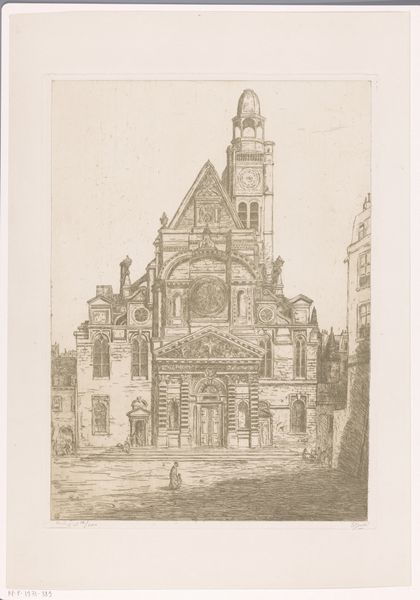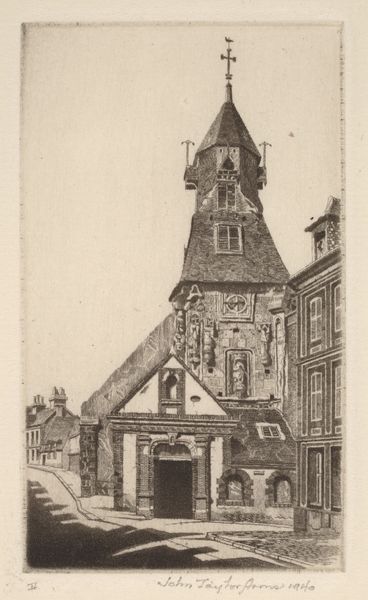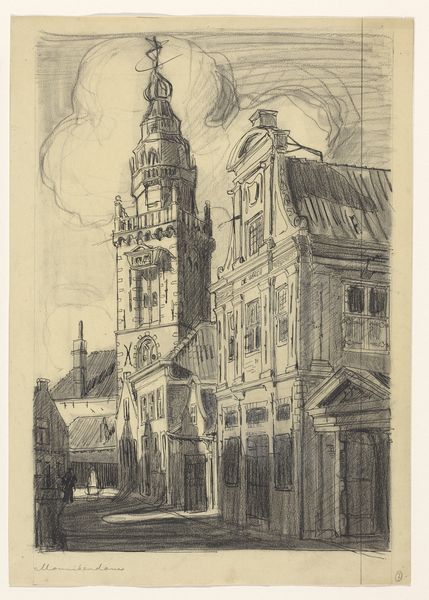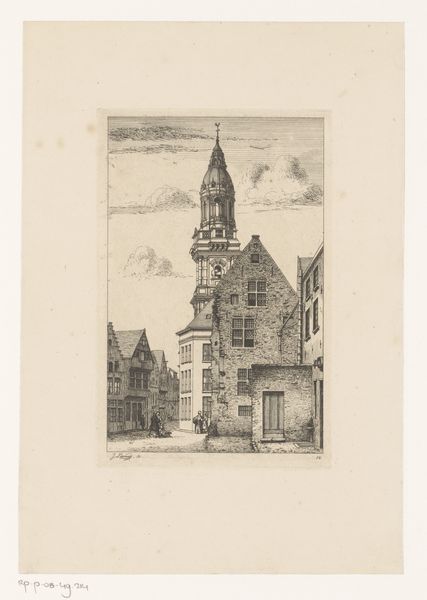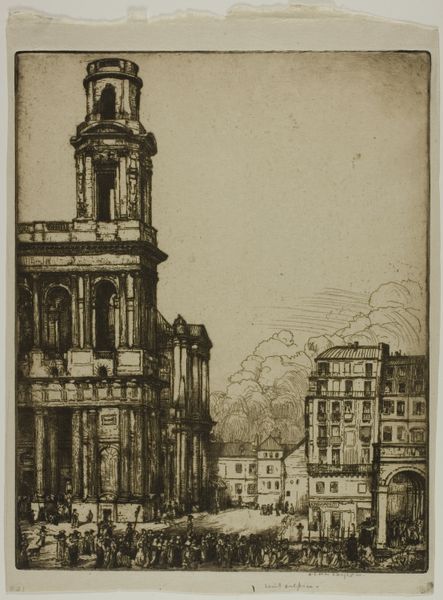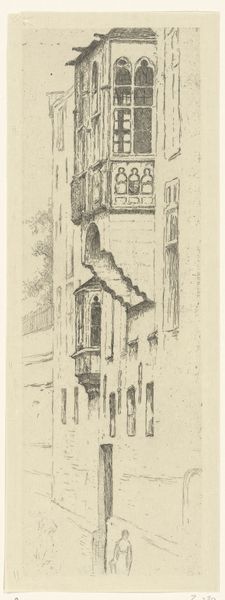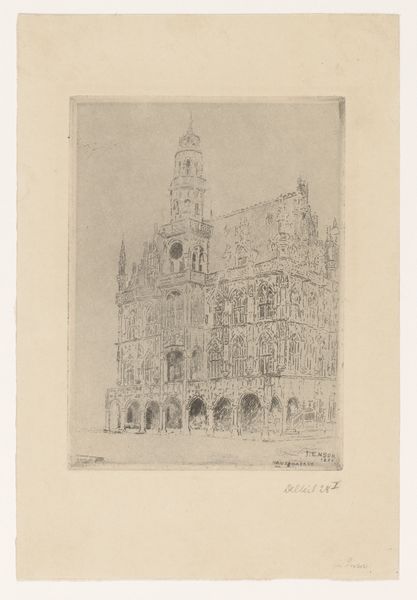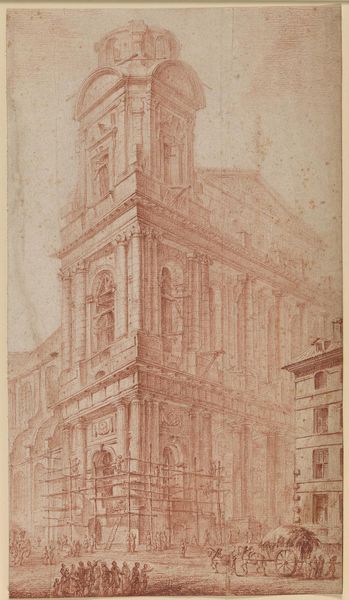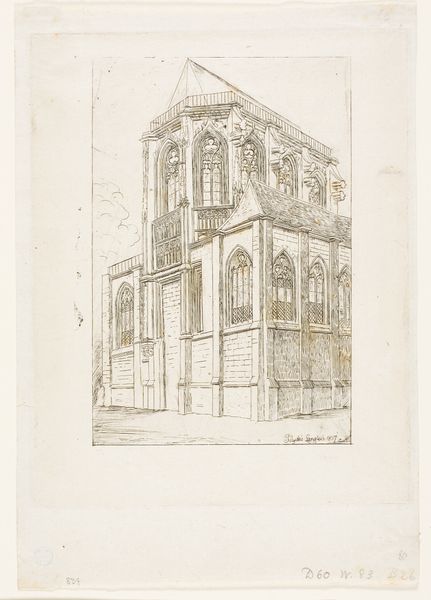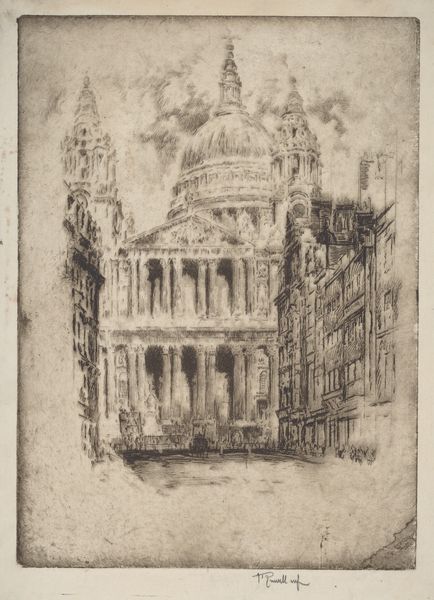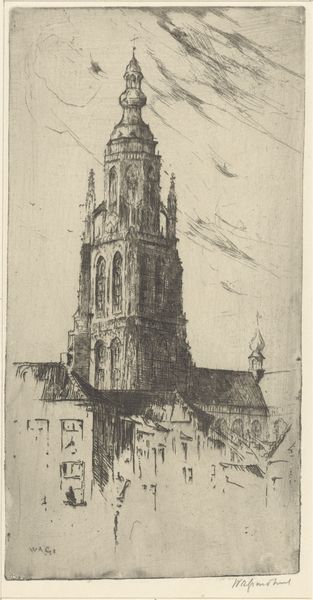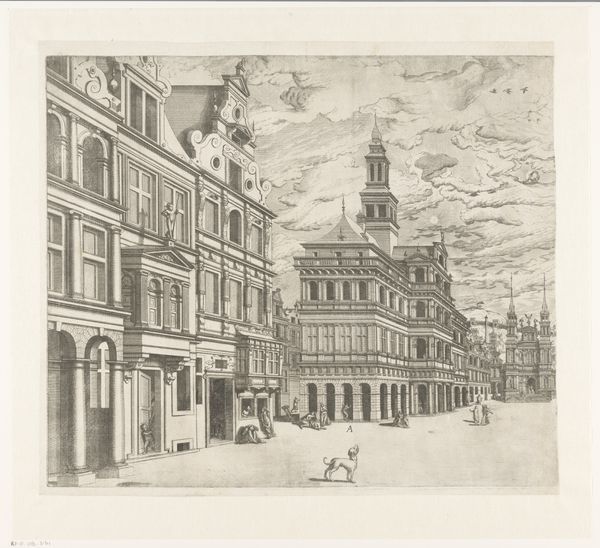
Dimensions: 274 × 156 mm (image/plate); 316 × 187 mm (sheet)
Copyright: Public Domain
Charles John Watson made this etching of St. Etienne du Mont in Paris, sometime around the turn of the 20th century. The etching process involves biting lines into a metal plate with acid, then using this plate to print an image. It’s a painstaking process that requires skill in both drawing and chemistry. Note how Watson uses the fine, etched lines to create a sense of depth and texture, especially in the facade of the church. The weight of the stone is made visible through the labor-intensive process of scoring the image, which is itself enabled by industrial advances in the availability of metal plates and acid. The print medium allowed Watson to reach a wider audience than a painting might, making images of important cultural sites accessible, tapping into a market for picturesque views. In this way, the work reflects the increasing commodification of art and culture in the late 19th century, catering to a growing middle class with an appetite for both travel and art.
Comments
No comments
Be the first to comment and join the conversation on the ultimate creative platform.
